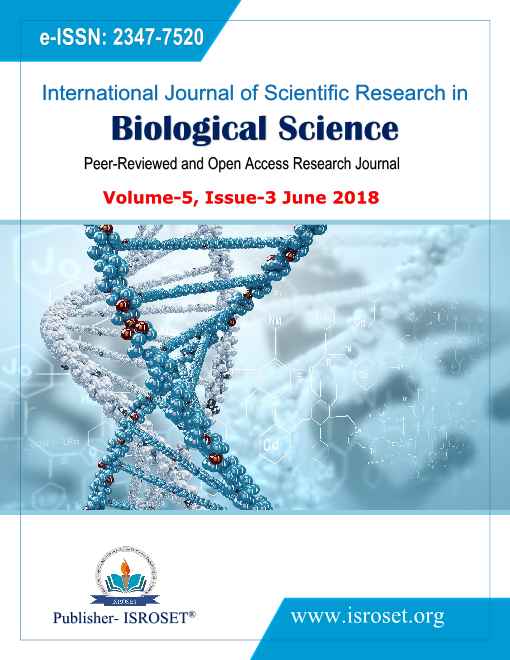A Preliminary survey on acarine fauna inhabiting different stored products in four districts of Malabar region, Kerala (India)
Keywords:
Mite, Stored products, arthropoda, Malabar, KeralaAbstract
The present paper reports for the occurrence of mites on stored products in four districts of Malabar region in Kerala which includes 33 species under 14 genera 12 families and 3 orders viz, Trombidiformes (suborder Prostigmata), Mesostigmata and Sarcoptiformes (Cohort Astigmata). The Family Cheyletidae represented as the most dominating family while Cheyletus malaccensis was the most abundant species found in stored products. The representatives of Stigmaeidae and Cunaxidae families were also dominant. Among the stored product, from pepper maximum number of mite species were identified followed by boiled rice and raw rice. Coriander represented with six species of mites whereas wheat represented with five species. This study also reported 3 species namely Lasioseius sp.1, Stigmaeus sp1 and Tydeus sp.1 which appeared to be un described and among these one species Lasioseius sp.1 which is being reported here for the first time from India inhabiting stored products.
References
N. Nangia, Studies on mites associated with stored products, bioecology and evaluation, different methods of control acarids (Astigmata: Acaridae), Ph.D. Thesis Uni, Agri,Sci,. Bangalore, 253 p, 1986.
S.K Gupta, Handbook.Injurious and beneficial mites infesting agricultural crops in India and their management. Nature books India, New Delhi, 362.pp.,2012
G.K. Girish, .K. Goel and K.Krishnamurthy, Occurrence of Acaropsis docta Berlese (Prostigmata: Cheyletidae) on Trogoderma granarium Fab., At Hapur (U.P.) Bulletin grain Tech.9:83-85, 1971.
R.B. Mathur and S.Mathur, Mites associated with stored grain/ products in Haryana, India, Indian J. Acar., 7:4-52., 1983.
A. Gupta and M. Chatterjee,. Some new records of mites infesting stored grains in Kolkata and its neighbourhood. Rec.Zool.Survey.India. 102:77-82, 2004.
Downloads
Published
How to Cite
Issue
Section
License

This work is licensed under a Creative Commons Attribution 4.0 International License.
Authors contributing to this journal agree to publish their articles under the Creative Commons Attribution 4.0 International License, allowing third parties to share their work (copy, distribute, transmit) and to adapt it, under the condition that the authors are given credit and that in the event of reuse or distribution, the terms of this license are made clear.







